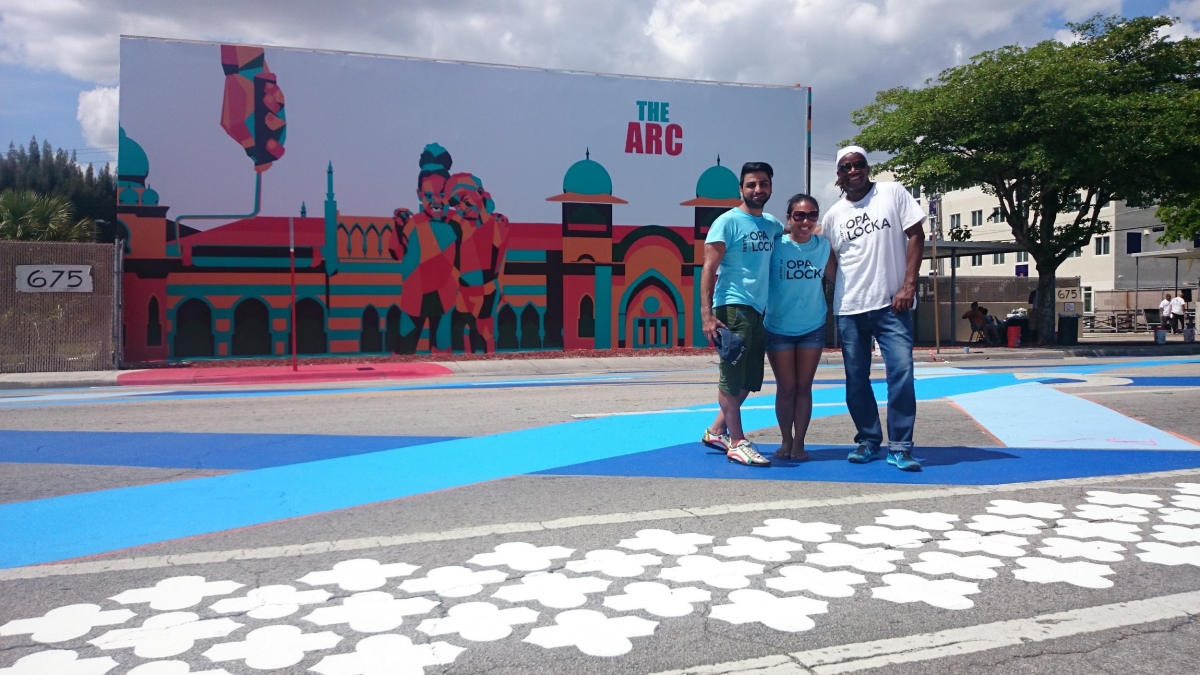7 P’s for Power: Creating Change through Arts-Based Community Development
Posted by May 08, 2018

Ms. Aileen Alon
I fell into the role of arts administrator in 2011—and at an organization whose focus isn’t the arts but rather community development. To be completely honest, I had little knowledge or practical experience in either arts administration or community development. But thankfully, I didn’t go through a traditional hiring practice, because I’m sure if I had, I would have been deemed as unqualified (alas, the topic of hiring practices really deserves its own blog post). I was, however, driven by the desire to combine my love for the arts with my innate nature to help others, and the person who interviewed me saw that as more valuable than proven experience in the field. It seemed that stars had aligned, and through the national service program AmeriCorps Public Allies, I was placed at the Opa-locka Community Development Corporation (OLCDC) in Opa-locka, FL, to help jumpstart their arts initiatives.
Like many starting out in their careers, in a new field, at a new organization, or any combination of the aforementioned, I struggled to make sense of this new role and my purpose. There was no precedent for me to follow, which heightened my challenges and confusion starting out. I was truly learning on the job and trying to build a ship while I sailed it. But I was, and have been, committed to understanding and strengthening my local arts ecosystem through my work to provide direction and ensure its relevancy.
In retrospect, I have been able to create change in, and through, the arts by being tasked with the novelty, luxury, and difficulties of starting something new at an established organization that, after 30 years, was granted the unprecedented resources to transform how it approached its work. In doing so, the arts have become one of the key components to OLCDC’s work in revitalizing the Opa-locka and north Miami-Dade County communities. The arts are integral to community development wholly because the arts and culture have the power to shape and define communities by bringing together people to build bridges and collaborate towards a common cause.

It is imperative for arts leaders and administrators to not just think out of the box, but also to work outside of it in order to help the arts field evolve and stay relevant, particularly with changes in funding, patronage, and social value. Arts-integrated community development allows arts and non-arts leaders to support their arts ecosystem while creating solutions for community issues. It’s not easy work, especially when you’re new to it. In my experience, I have found that it requires the following 7 P’s for Power:
-
Passion—Steve Jobs said, “People with passion can change the world. … The only way to do great work is to love what you do.” If you are not passionate about your mission and work, how can you expect others to follow suit?
-
Perspective—This is crucial when working with/in various communities, particularly if you are not originally from them. Whether it’s design charrettes with different stakeholders, community meetings, or just sitting in the local park playing dominoes with residents, it’s imperative to listen to and include the perspectives of all the various stakeholders. Doing this on an ongoing basis is especially important with long-term projects, as perspectives and thus priorities can change, which can impact planning.
-
Planning—Even creative and somewhat free-spirited people like myself need plans to provide some structure, direction, and a means against which to measure success. However, it’s important to be flexible and allow for plans to change should internal and/or external factors require them to. Planning also allows for prioritization to focus on what matters most so you don’t get sidetracked with every new idea or opportunity that pops up.
-
Persistence—“Everyone has a plan until they get punched in the face.” —Mike Tyson
While hopefully your work isn’t physically beating you up, you will face challenges and opposition to your attempt to create change. Being able to get back up and continue doing something, even if you have to reevaluate and alter plans a bit, despite difficulties is key to success.
-
Patience—Change. Takes. Time. This is one of the reasons I’ve stayed with my organization for so long. Having patience has definitely paid off. Integrating the arts into community development work at OLCDC has involved changing organizational structure, mission, branding, culture, funding streams, and activities; changing mindsets and perspectives about the importance of the arts; changing communication styles and building a common language to better facilitate interactions and understandings between community leaders, community development practitioners, residents, and artists; changing governmental policy; and even changing how potential funders and partners view Opa-locka in order for them to dedicate their resources here. None of this happened overnight, and there have been many hiccups along the road.
-
Perseverance—Along with patience and persistence comes perseverance to not just deal with, but to help overcome any and all roadblocks to success. Whether it’s not getting a grant or the city commission not approving a project, residents not showing up to a community engagement opportunity or the artist you really want to work with being too busy (or out of budget), you have to keep working towards—and believing in your—success. Ain’t no stopping (me) now!
- Partnerships—Last but not least, arts-integrated community development absolutely requires cross-sectoral partnerships. Our partners include those working in the arts, traditional community development practitioners, local leadership, funders, educational institutions, community residents, and more. One of OLCDC’s first cultural partners when trying to include the arts in its organizational work was the Miami-Dade County Department of Cultural Affairs. It seemed to be the best local partnership available to help legitimize and guide OLCDC’s artistic efforts, and led to an Our Town grant from the National Endowment for the Arts, as well as the creation of Opa-locka’s Public Arts Master Plan in 2012.
Together, these P’s have given me the sustained willpower to help create change in my community through the arts, while navigating between two seemingly different fields. What has empowered you to successfully create change?





